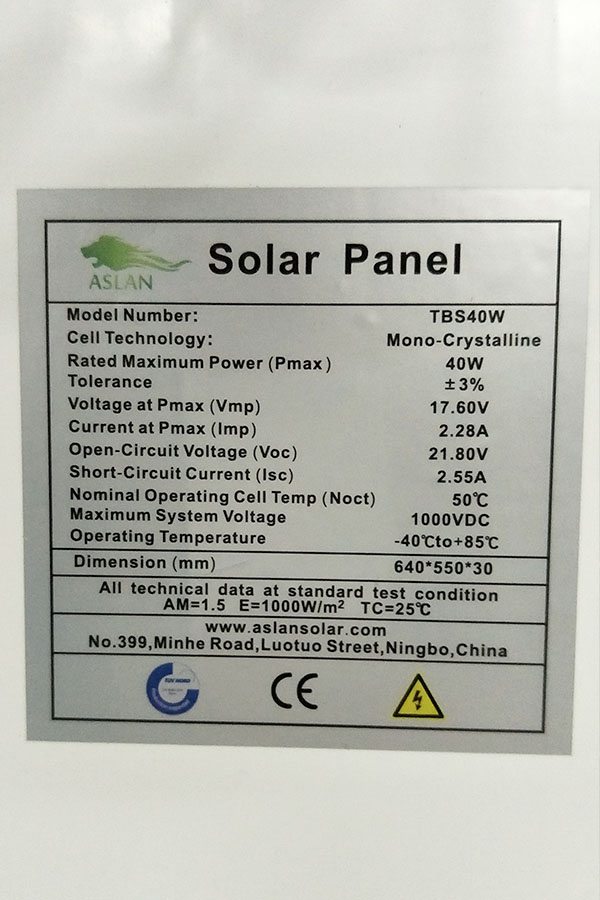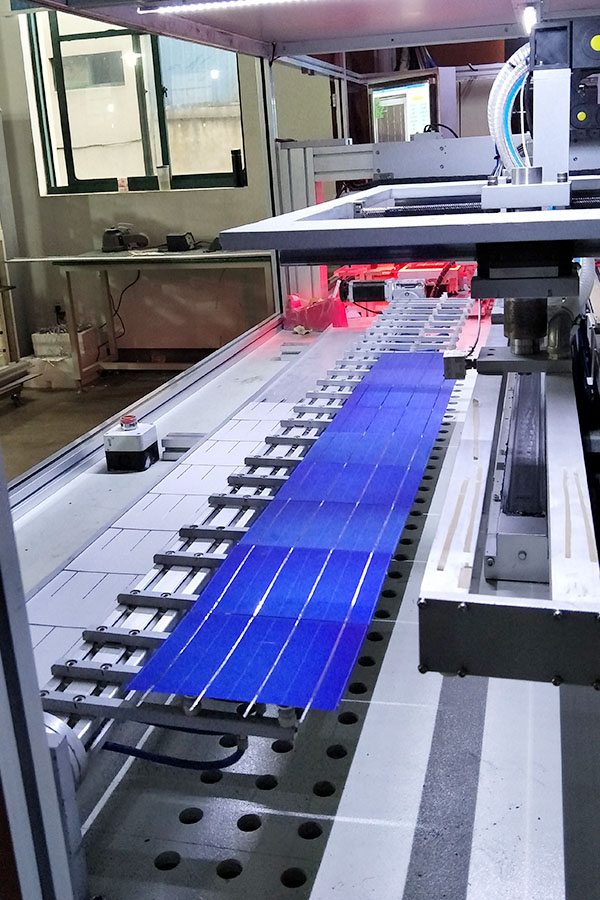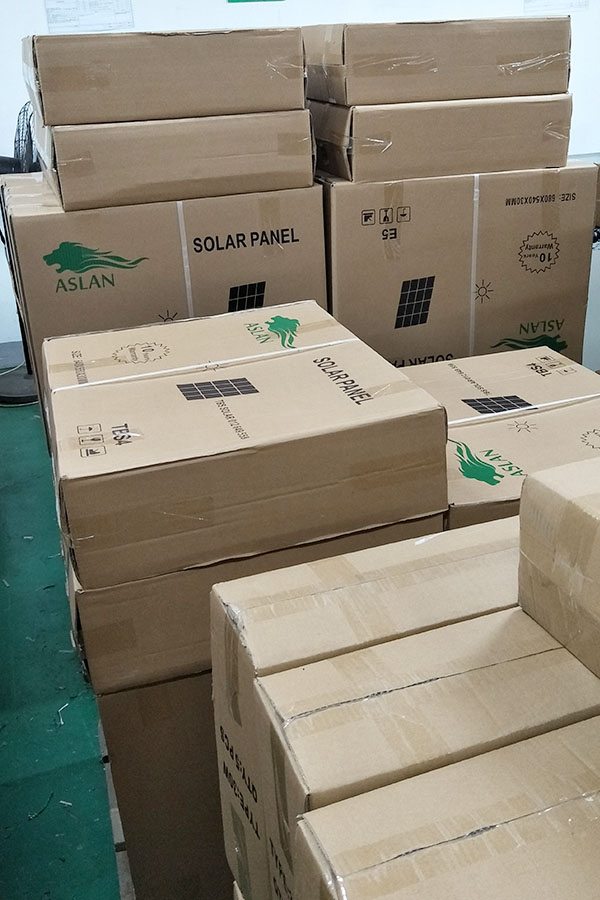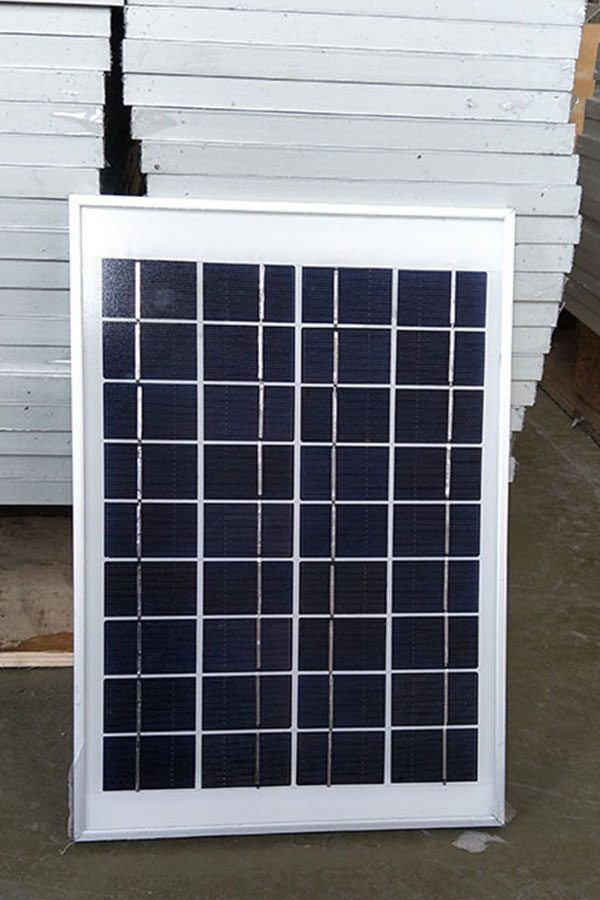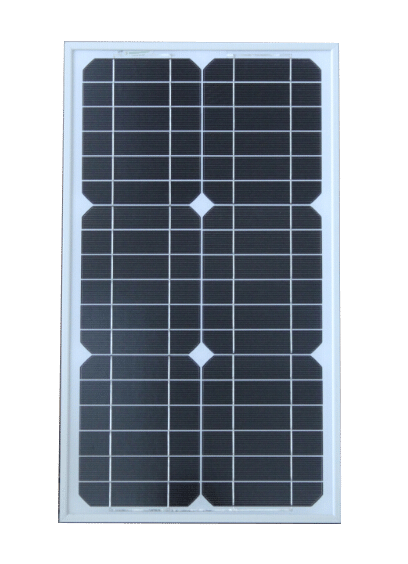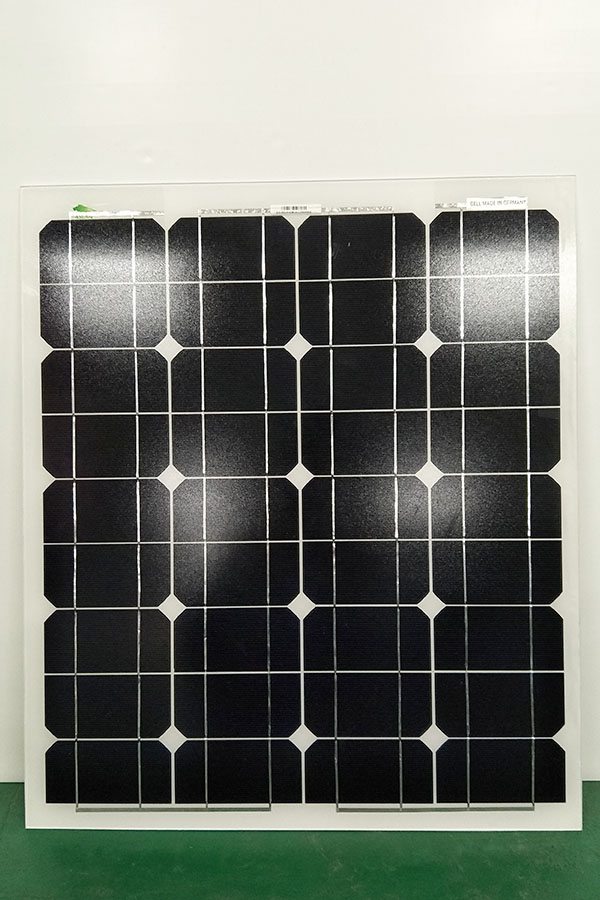Professional Design Mono-Crystalline 50W Solar Panel to Mexico Factories
Short Description:
Our eternal pursuits are the attitude of "regard the market, regard the custom, regard the science" and the theory of "quality the basic, trust the first and management the advanced" for Professional Design Mono-Crystalline 50W Solar Panel to Mexico Factories, We sincerely welcome overseas customers to consult for the long-term cooperation and the mutual development.We strongly believe that we can do better and better.
Technical parameter
Maximum Power(W) 50W
Optimum Power Voltage(Vmp) 18.72V
Optimum Operating Current(Imp) 2.67A
Open Circuit Voltage(Voc) 22.83V
Short Circuit Current(Isc) 2.94A
Mechanical Characteristics
Cell Type Monocrystalline 125×62.5mm
No of Cell 36 (4x9pcs)
Dimensions 636x554x25mm
Weight 4.2Kg
Front Glass 3.5mm,High Transmission, Low Iron,Tempered Glass
Junction box IP65 Rated
Output Cable TUV 1×4.0mm2/UL12AWG,Length:900mm
Temperature and Coefficients
Operating Temperature(°C): -40°C ~ + 85°C
Maximum System Voltage: 600V(UL)/1000V(IEC) DC
Maximum Rated Current Series: 15A
Temperature Coefficients of Pmax: -0.47%
Temperature Coefficients of Voc: -0.389%
Temperature Coefficients of Isc: 0.057%
Nominal Operationg Cell Temperature (NOCT): 47+/-2°C
Materials of solar panel
1).Solar Cell——Mono-crystalline solar cell 125*125mm
2).Front Glass——-3.2mm, high transmission, low iron, tempered glass
3).EVA——-excellent anti-aging EVA
4).TPT——-TPT hot seal made of flame resistance
5).Frame——anodized aluminum profile
6).Junction Box——-IP65 rated, high quality, with diode protection
Superiority: high quality anodized aluminum frame, high efficiency long life, easy installation, strong wind resistance, strong hail resistance.
Features
1. High cell efficiency with quality silicon materials for long term output stability
2. Strictly quality control ensure the stability and reliability, totally 23 QC procedures
3. High transmittance low iron tempered glass with enhanced stiffness and impact resistance
4. Both Poly-crystalline and Mono-crystalline
5. Excellent performance in harsh weather
6. Outstanding electrical performance under high temperature and low irradiance
Quality assurance testing
Thermal cycling test
Thermal shock test
Thermal/Freezing and high humidity cycling test
Electrical isolation test
Hail impact test
Mechanical, wind and twist loading test
Salt mist test
Light and water-exposure test
Moist carbon dioxide/sulphur dioxide
Cette vidéo vous explique comment brancher un ruban strip LED d’une seule couleur. Le branchement est simple et rapide.
Pour plus d’information rendez-vous sur notre site internet: www.acheter-ampoules.fr
Transformateurs disponible ici :
http://www.acheter-ampoules.fr/accessoire/transformateurs/24v.html
Rubans LED Disponibles ici:
http://www.acheter-ampoules.fr/led-12v/ruban-et-accessoires/ruban-led.html
What is CRYSTALLINE SILICON? What does CRYSTALLINE SILICON mean? CRYSTALLINE SILICON meaning – CRYSTALLINE SILICON definition – CRYSTALLINE SILICON explanation.
Source: Wikipedia.org article, adapted under https://creativecommons.org/licenses/by-sa/3.0/ license.
Crystalline silicon (c-Si) is the crystalline forms of silicon, either multicrystalline silicon (multi-Si) consisting of small crystals, or monocrystalline silicon (mono-Si), a continuous crystal. Crystalline silicon is the dominant semiconducting material used in photovoltaic technology for the production of solar cells. These cells are assembled into solar panels as part of a photovoltaic system to generate solar power from sunlight.
In electronics, crystalline silicon is typically the monocrystalline form of silicon, and is used for producing microchips. This silicon contains much lower impurity levels than those required for solar cells. Production of semiconductor grade silicon involves a chemical purification to produce hyperpure polysilicon followed by a recrystallization process to grow monocrystalline silicon. The cylindrical boules are then cut into wafers for further processing.
Solar cells made of crystalline silicon are often called conventional, traditional, or first generation solar cells, as they were developed in the 1950s and remained the most common type up to the present time. Because they are produced from 160–190 µm thick solar wafers—slices from bulks of solar grade silicon—they are sometimes called wafer-based solar cells.
Solar cells made from c-Si are single-junction cells and are generally more efficient than their rival technologies, which are the second-generation thin film solar cells, the most important being CdTe, CIGS, and amorphous silicon (a-Si). Amorphous silicon is an allotropic variant of silicon, and amorphous means “without shape” to describe its non-crystalline form.


